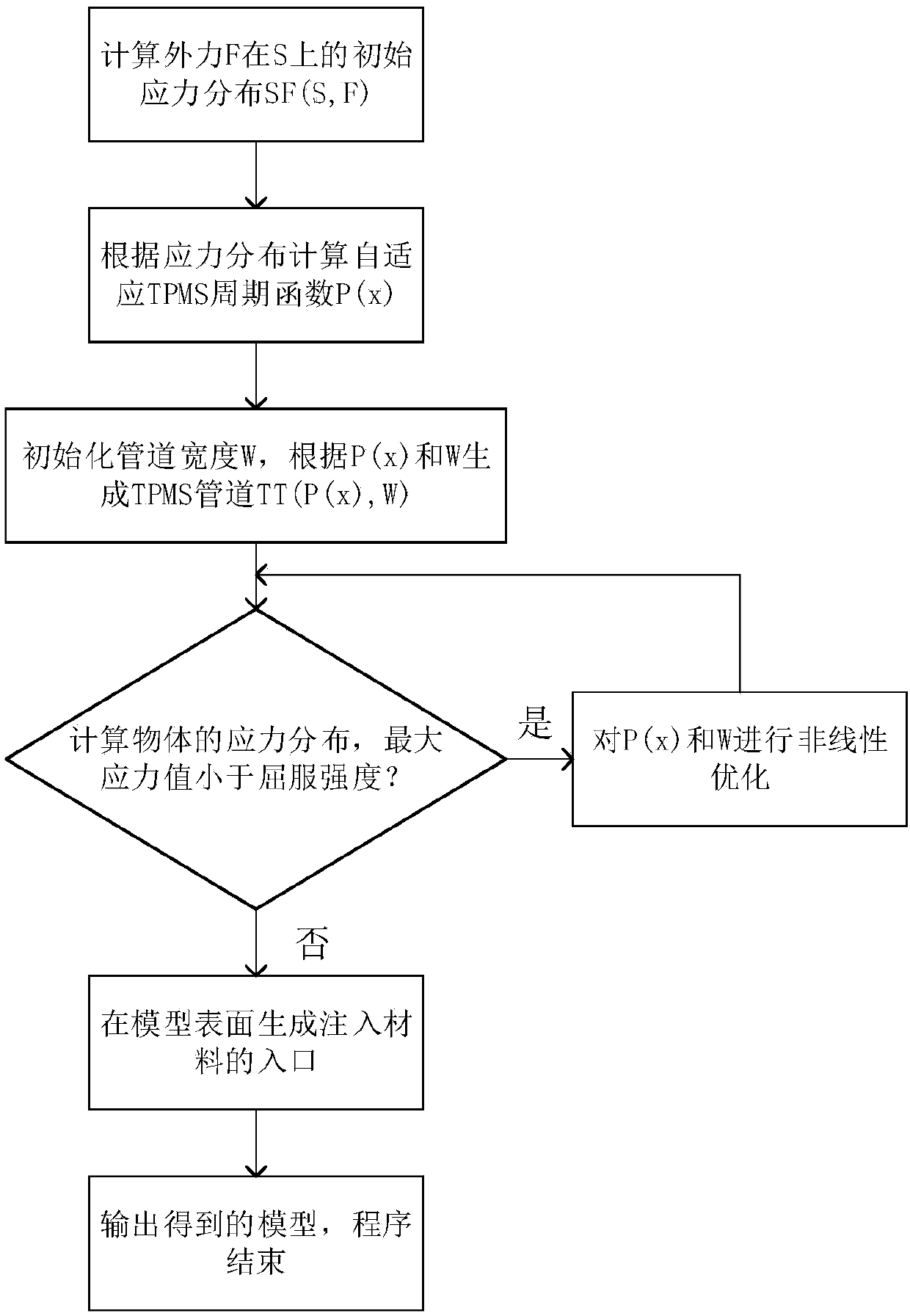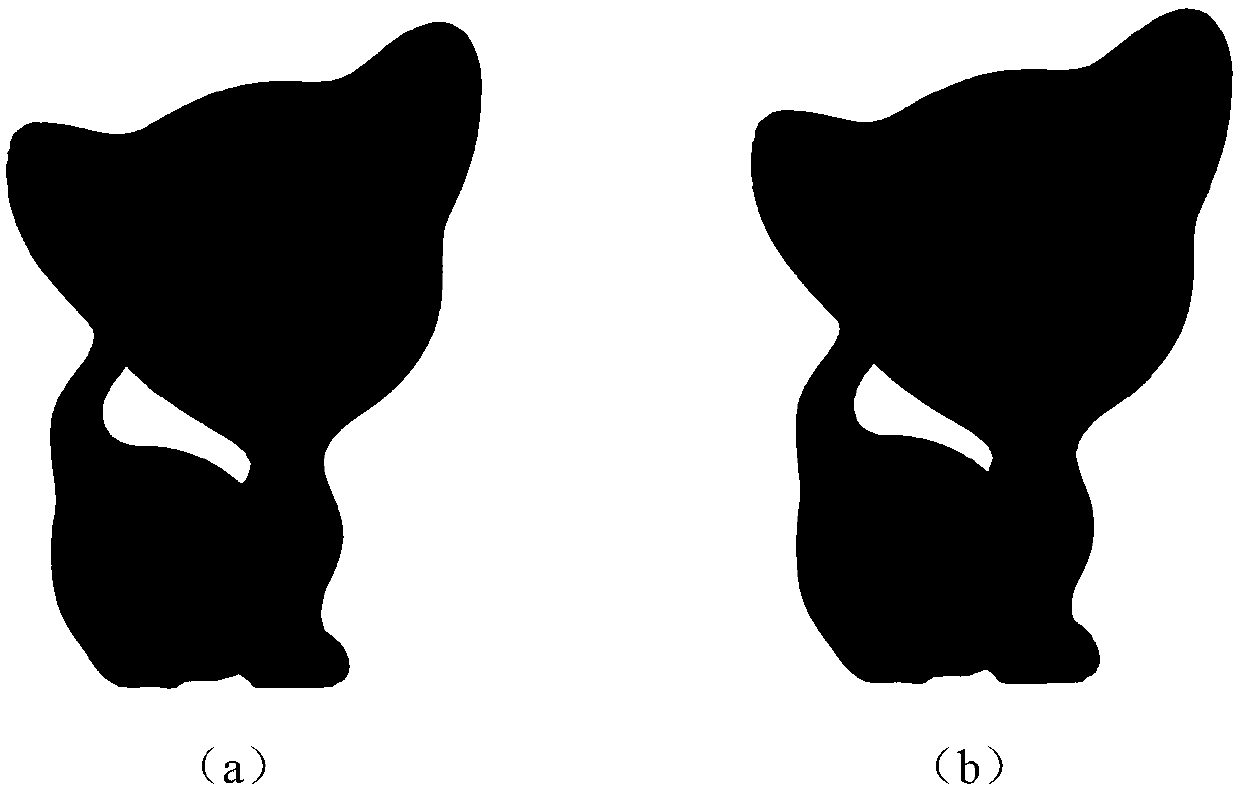TPMS-based model structure optimization method and device for 3D printing
A 3D printing and model structure technology, applied in 3D modeling, design optimization/simulation, instruments, etc., can solve the problem of inability to remove hole materials, internal holes are not connected, save printing time, save printing materials, enhance traditional The effect of 3D printing technology
- Summary
- Abstract
- Description
- Claims
- Application Information
AI Technical Summary
Problems solved by technology
Method used
Image
Examples
Embodiment 1
[0054] This embodiment discloses a 3D printing-oriented model structure optimization method based on TPMS, such as figure 1 As mentioned above, firstly, for an initially given 3D model S and a given external force F, this method can generate a TPMS pipeline inside the 3D model, so that liquid can be injected smoothly and completely fill the entire pipeline. This method optimizes the distribution of the TPMS pipeline, so that the injected material can be more intelligently distributed in the area with greater stress, so that the object can withstand a given external force.
[0055] figure 1 It is a flowchart of the present invention, and its steps include:
[0056] Step 1: Perform force analysis based on the finite element method to obtain the stress distribution SF(S,F) of a given 3D model;
[0057] Step 2: Define an adaptive TPMS periodic function P(x) according to the stress distribution. TPMS is a non-uniform structure located inside the shape, and the frequency is high i...
Embodiment 2
[0098]The purpose of this embodiment is to provide a computing device.
[0099] A TPMS-based model structure optimization device for 3D printing, comprising a memory, a processor, and a computer program stored on the memory and operable on the processor, and the processor implements the following steps when executing the program, including:
[0100] performing a finite element analysis on a given model to obtain the stress distribution of said model;
[0101] Define an adaptive TPMS periodic function according to the geometry and stress distribution of a given model;
[0102] Initialize the pipeline width, generate an internal pipeline according to the TPMS periodic function and the pipeline width;
[0103] Recalculate the stress distribution of the model to determine whether the force requirements are met. If so, generate an entry point on the surface of the model as the entrance for injecting material into the pipeline; Optimization, generate internal pipes according to th...
Embodiment 3
[0105] The purpose of this embodiment is to provide a computer-readable storage medium.
[0106] A computer-readable storage medium, on which a computer program is stored, and when the program is executed by a processor, the following steps are performed:
[0107] performing a finite element analysis on a given model to obtain the stress distribution of said model;
[0108] Define an adaptive TPMS periodic function according to the geometry and stress distribution of a given model;
[0109] Initialize the pipeline width, generate an internal pipeline according to the TPMS periodic function and the pipeline width;
[0110] Recalculate the stress distribution of the model to determine whether the force requirements are met. If so, generate an entry point on the surface of the model as the entrance for injecting material into the pipeline; Optimization, generate internal pipes according to the optimized TPMS periodic function and pipe width, and repeat this step until the stres...
PUM
 Login to View More
Login to View More Abstract
Description
Claims
Application Information
 Login to View More
Login to View More - R&D
- Intellectual Property
- Life Sciences
- Materials
- Tech Scout
- Unparalleled Data Quality
- Higher Quality Content
- 60% Fewer Hallucinations
Browse by: Latest US Patents, China's latest patents, Technical Efficacy Thesaurus, Application Domain, Technology Topic, Popular Technical Reports.
© 2025 PatSnap. All rights reserved.Legal|Privacy policy|Modern Slavery Act Transparency Statement|Sitemap|About US| Contact US: help@patsnap.com



